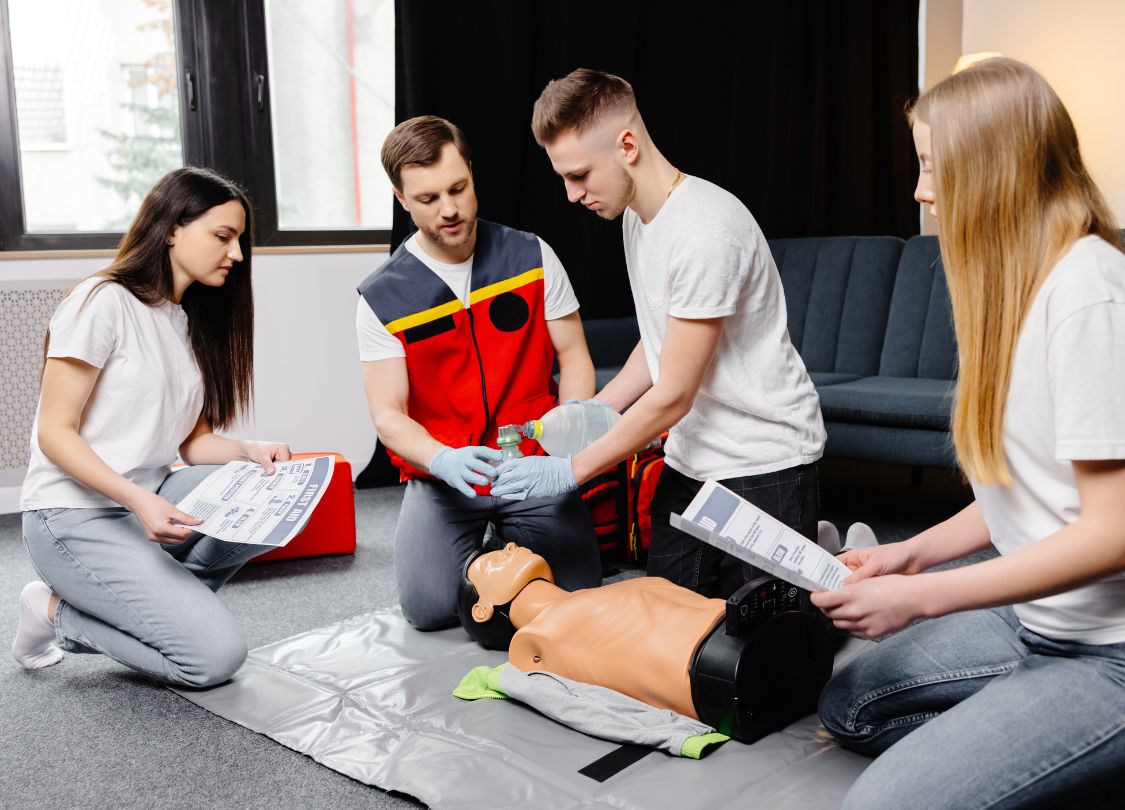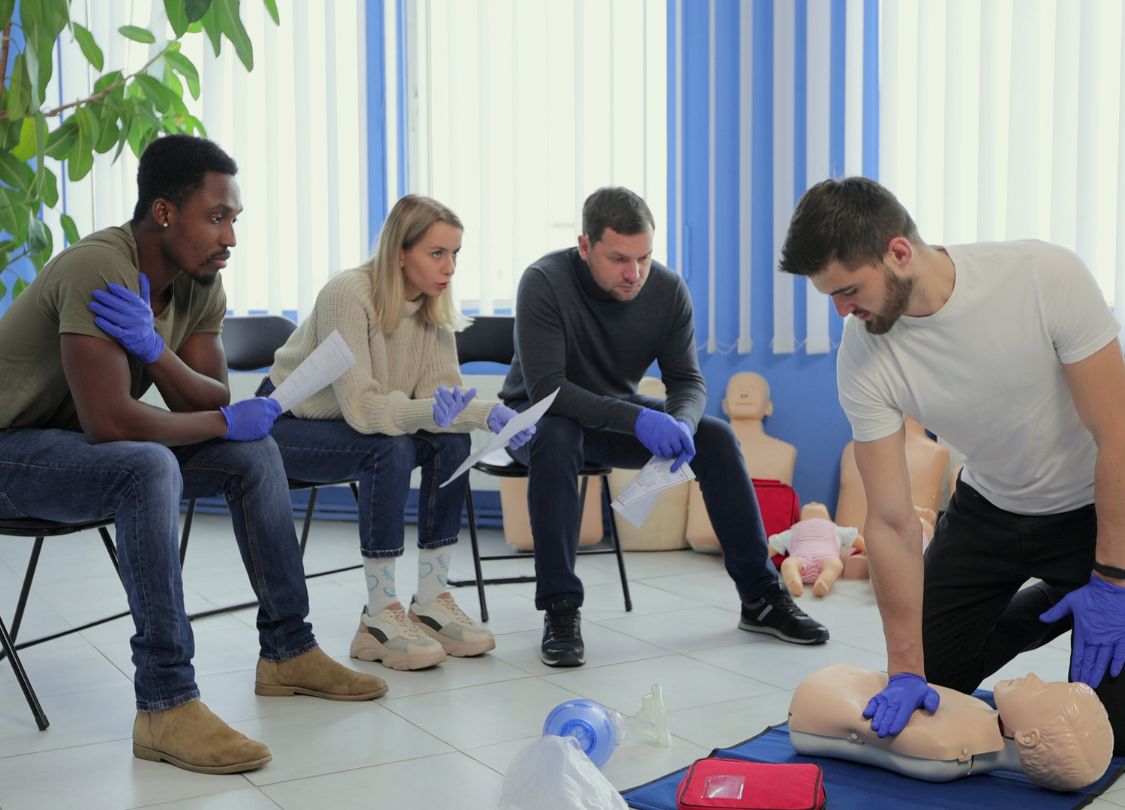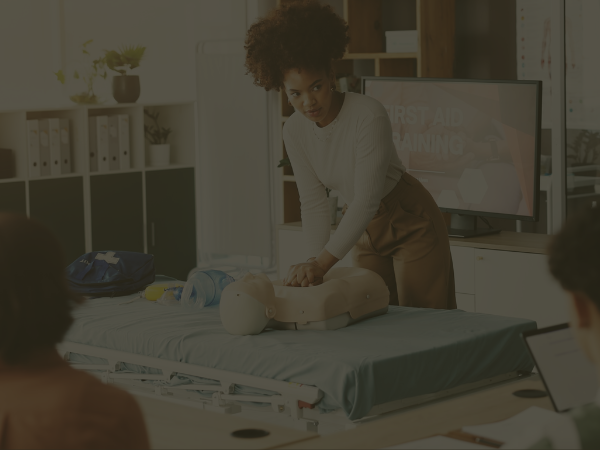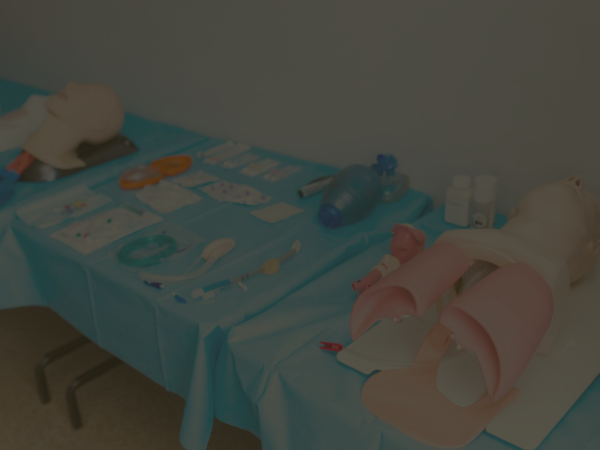Curious about how to find my CPR certification? We’ve got you covered.
You know you took and passed your CPR class—but you’re struggling to find your certification. Here, we’ll explore exactly what you need to know when you’re wondering, “how to find my CPR certification,” as well as what you need to do to earn your certification if you have yet to complete and pass a CPR training course.
How to Find My CPR Certification
It can feel super frustrating to be unable to find an important piece of paperwork, such as your CPR certificate.
Here, we’ll cover each detail of how to find my CPR certification if you’ve misplaced your physical or digital certificate.
Here’s what you’ll need to do in order to get a copy of your CPR certificate if you seem to have misplaced your original:
1. Determine the certifying organization
To understand how to find my CPR certification, you’ll need to determine the organization that provided you with your CPR certification.
Reputable organizations that may have provided your certificate include:
- American Red Cross
- American Safety and Health Institute (ASHI)
- Save a Life Certifications by NHCPS
- National Safety Council
If you’re unsure of which organization granted your certification, you may want to check your bank records or reach out to the organizations listed above to learn whether they have your information on file. If you received your certification as a part of a work requirement, it’s likely that your human resources department will be able to provide you with your certification organization.
2. Gather personal information
The next step in how to find my CPR certification is to provide your certification organization with personal information in order to verify and locate your certificate.
Information that you’ll want to have on hand when you call the organization that issued your certificate includes:
- Your full name (be sure this is the same name that you used during the certification process, if your name has changed you’ll likely need to provide proof of your legal name change)
- Your date of birth (you may need to provide a copy of your birth certificate or government-issued identification)
- Certification number (the organization may be able to look this up for you)
- Date or approximate timeframe of your certification
3. Visit the organization’s website
You’ll find that most CPR certification organizations utilize an online portal.
In order to access your certification through the organization’s website, follow these steps:
- Save a Life Certifications by NHCPS: Visit Save a Life’s online portal to log into your account and download your digital certification card.
- American Red Cross: Enter your name and email address to retrieve your certificate.
- American Safety and Health Institute: Reach out to your ASHI training institute directly in order to obtain a copy of your certificate.
- National Safety Council: Visit the NSC certification lookup page for instructions on replacing or verifying your certification.
If you received your certification from a non-national organization, you may need to reach out to the organization directly to learn how to find my CPR certification.
5. Check your email
Most organizations will send you a link that allows you to view your certificate. Other organizations allow you to view your certificate immediately after you login to their website. If you have a problem viewing your certificate, contact the organization directly for assistance to get additional help on how to find my CPR certification.
6. Print and save your certificate
To avoid losing your certificate and having to go through the process of figuring out how to find my CPR certification in the future, be sure to save and print your certificate. You may also want to save a copy of your certificate on a flash drive so that you have an extra copy in storage.
Why Should You Get a CPR Certification?

Going through the CPR certification process provides you with an important skill that can be the difference between life and death in emergencies like drowning, cardiac arrest, or choking. Earning your CPR certification is essential for many careers, and can help you feel prepared in a wide variety of unexpected situations.
How CPR Saves Lives
Sudden cardiac arrest, or SCA, is one of the leading causes of death worldwide. When a person experiencing SCA receives CPR, their likelihood of survival increases greatly. Every second counts in the critical moments following cardiac arrest. Performing CPR helps to maintain bloodflow to the brain and vital organs in the critical moments that follow a cardiac event. This can help buy the person suffering from the cardiac event time until emergency help arrives.
What to Expect During CPR Training
If you’ve never gone through a CPR certification class before, you may be unsure of what to expect. It’s important to sign up for an accredited class to ensure that you’re learning the latest best practices in CPR.
You’ll learn a wide variety of essential emergency management skills in your CPR training class, including:
- Basic life support principles: As you begin your CPR training class, you’ll move through the chain of survival, allowing you to begin to understand how to decide what level of assistance is necessary in a variety of situations. You’ll learn how to recognize early warning signs of an emergency situation, how to call for help, perform CPR, use an AED, and communicate with emergency professionals to help them assess the situation when they arrive on the scene.
- Assessment and scene safety: When you arrive on the scene of an emergency, it’s important that you take the time to assess whether it’s safe to proceed with emergency assistance. Some situations—such as electrical emergencies or chemical emergencies—may require special care before medical care can be provided for victims. In this portion of your CPR training class, you’ll also learn how to assess your victim for reponsivness, breathing, and pulse. This will help you determine the best course of action to support your victim’s well-being.
- Adult CPR: You’ll learn everything that you need to know to effectively perform CPR in an emergency situation, including proper hand placement, compression depth, rate of compressions, rescue breaths, and how to perform hands-only CPR.
- Child and infant CPR: During the infant and child CPR portion of your training, you’ll learn the modifications that you need to make regarding the depth of compressions, CPR sequence, and hand/finger positioning when assisting child and infant victims.
- Use of an automated external defibrillator (AED): An AED is a machine that can restore a normal heart rhythm during cardiac arrest. In this portion of your CPR training class, you’ll learn how to use an AED and what to do after the AED process is complete.
- Choking relief: You’ll learn the Heimlich maneuver to assist adults and children who are choking, as well as how to utilize back blows and chest thrusts to help a choking infant. You’ll also learn how you can help someone who has choked and has become unconscious.
- Recovery position: In this portion of your CPR training class, you’ll learn how to place an unconscious person who is breathing on their side so that they can maintain an open airway while you wait for emergency services to arrive.
- Legal and ethical considerations in giving aid: No matter how well-versed you are in providing CPR, using an AED, or providing assistance in a choking situation, it can be tough to know exactly how you’ll act when you’re providing assistance during an emergency for the first time. In your class, you’ll go over legal and ethical considerations, such as knowing when to help and the importance/process of getting consent from a conscious person who is in need of your help. You’ll also discuss Good Samaritan laws so that you understand the protection you’re afforded in the event that you are unable to help the victim in question.
- Scenario-based practice: During this portion of your CPR class, you’ll engage in realistic practice scenarios to apply your new or refreshed CPR and AED skills in a controlled environment. Scenario-based practice offers a low-pressure environment where you can hone your skills and learn from your mistakes without someone’s life on the line.
- Certification requirements and testing: Some CPR courses require that you pass a written test in addition to a skills-based test in order to receive your CPR certification. Other classes only require that you pass a skills-based training test. In addition to showing your ability to safely and correctly perform CPR, you’ll also need to show your ability to correctly use an AED, provide assistance to a person who is choking, and assess emergency situations.
Online Vs. In-Person CPR Class: Which Makes More Sense for You?

When you’re searching for CPR class near me, it can be tough to decide whether online or in-person CPR classes are a better fit for your needs. Here, we’ll take a look at the differences between these two options to help you decide whether a virtual or traditional CPR class is the best option for you.
Many people like online CPR classes because they offer convenience and flexibility, making it easier to fit your training into a busy schedule. Online CPR classes are also easily accessible from anywhere that you have an internet connection, helping you get the training that you need while you’re on-the-go. Online classes also tend to be more cost-effective than traditional classes due to a reduced need for physical resources, multiple instructors, and facilities. During an online class, you’ll get exposed to a variety of learning modalities, often including interactive modules, online quizzes, and videos.
While there are many advantages to online classes, there are also some disadvantages, including the lack of physical interaction. While online modules have come a long way with creating real-life practice scenarios, some people find that they prefer in-person, hands-on practice. Self-discipline is required for online certifications, as you’ll need to hold yourself accountable for staying on-task during your training.
In-person CPR classes also offer many benefits, including practical experience that can enhance your skill level and real-time feedback from your instructor that allows you to correct mistakes in the moment. You’ll also get a structured learning environment, which can be helpful if you struggle to stay on task when you’re learning virtually. Many traditional CPR students also appreciate the interactive learning that they get with traditional classes, as it’s easier to engage in group discussions.
There are some downsides to traditional, in-person classes, however. There is limited flexibility when it comes to taking a class in-person, as classes are scheduled at specific times. If you have a busy or difficult schedule, it can be hard to make it to your classes and earn your certification. You’ll also need to factor in time to travel to and from your class site. Lastly, in-person classes often have higher fees than traditional classes due to an increased need for instructors, facilities, and equipment.
Looking for the best of both worlds? Some CPR certification organizations offer hybrid program options, where you’re able to complete some of your coursework online while still reporting to a traditional classroom to participate in hands-on practical training.
How to Earn Your CPR Certification
At Save a Life Certifications by NHCPS, our team is here to support you as you work to stay up-to-date on the latest best practices in patient care. No matter where you’re at in your career, we’re excited to work with you and help you get to the next level. Click here to learn more about our CPR training options, and don’t hesitate to reach out with any questions. We look forward to speaking with you!
Frequently Asked Questions
How long is a CPR certification good for?
In most states, CPR certification is valid for two years. After that, you’ll need to take a refresher course.
Is it better to take CPR classes in person or online?
CPR certification online and in person both provide you with the knowledge you need to save a life.
How long is a CPR certification class?
A standard CPR training class takes about four hours, while a CPR training class that includes basic first aid training takes about six hours.







Leave a Reply